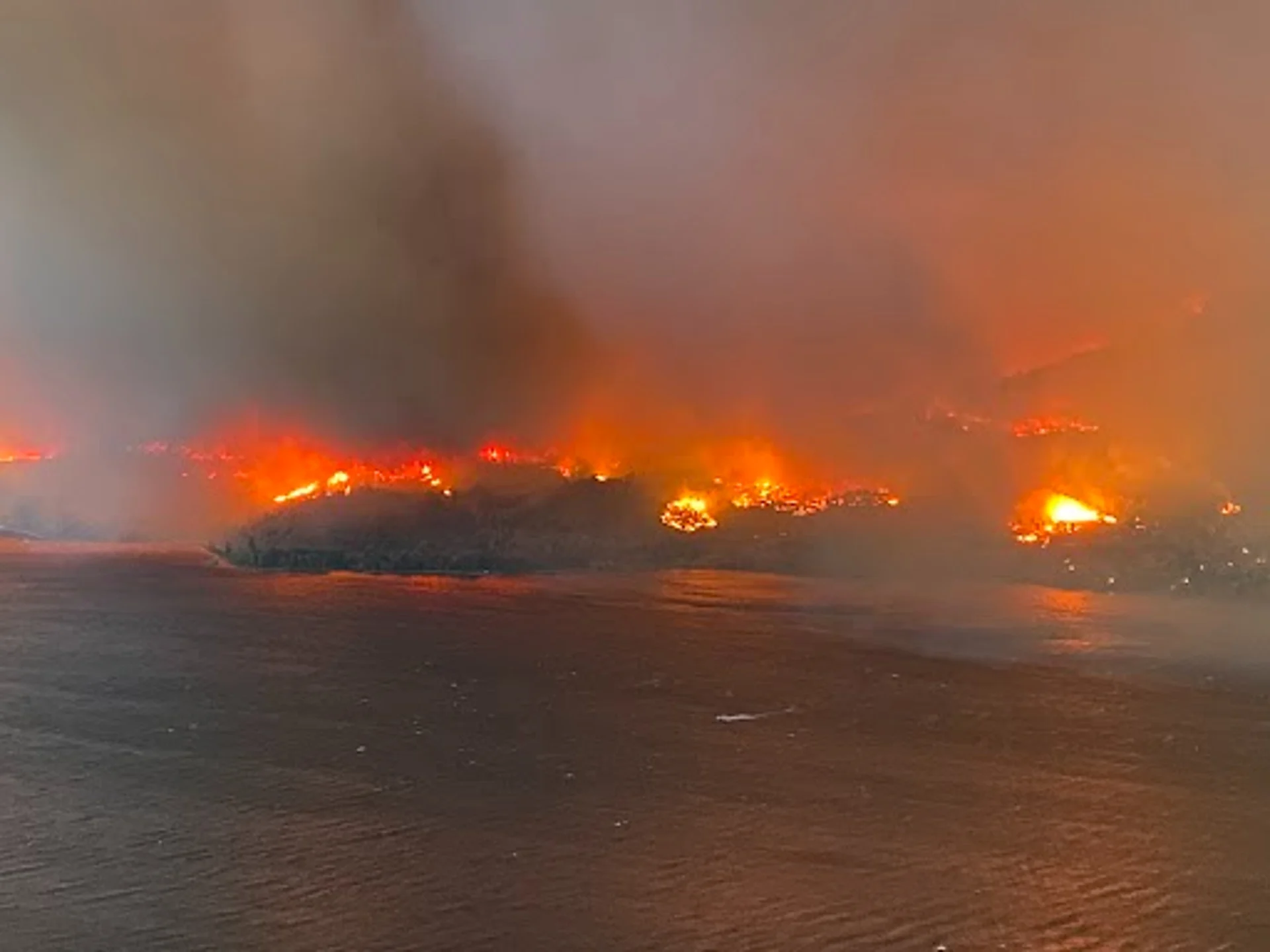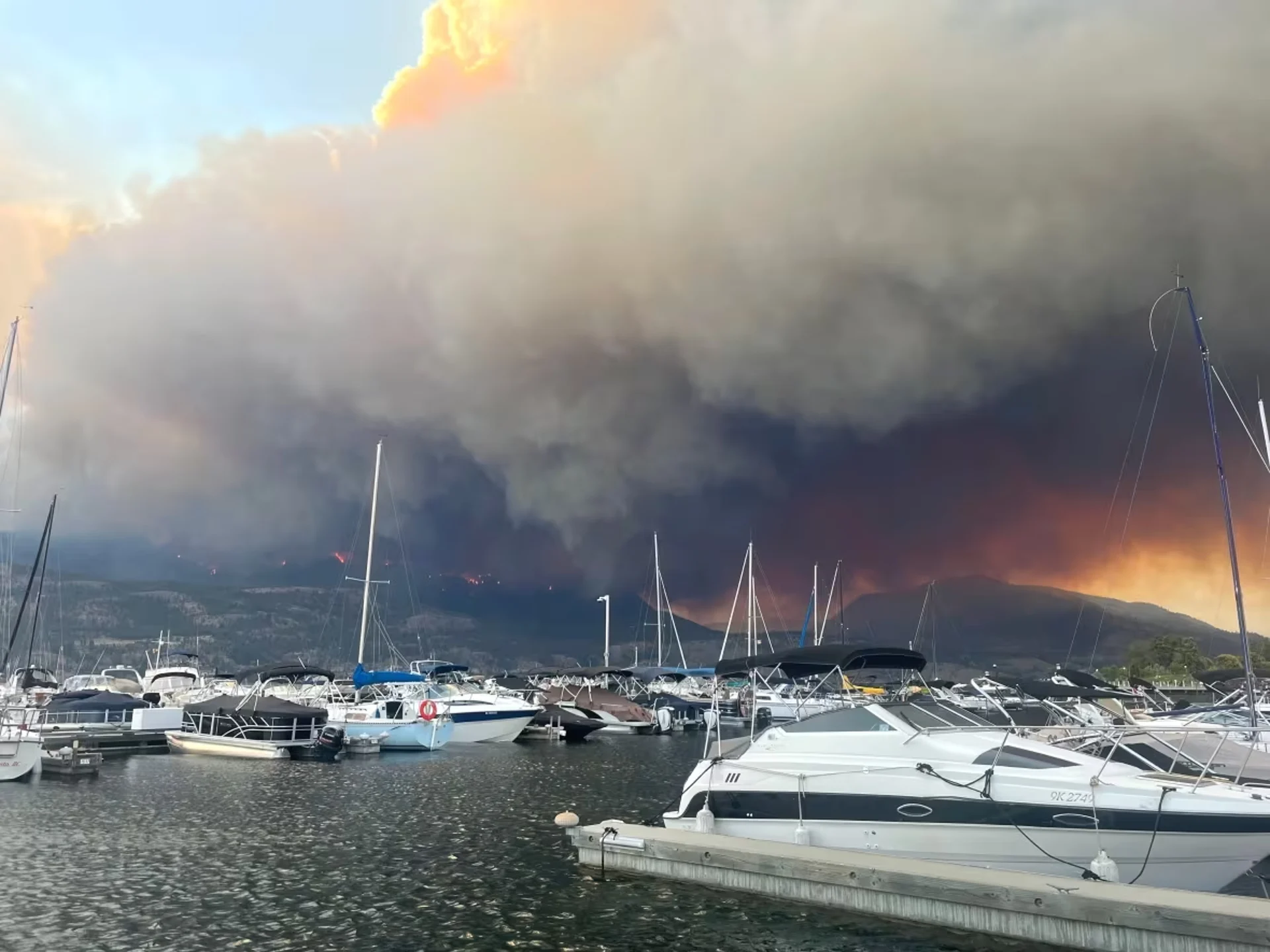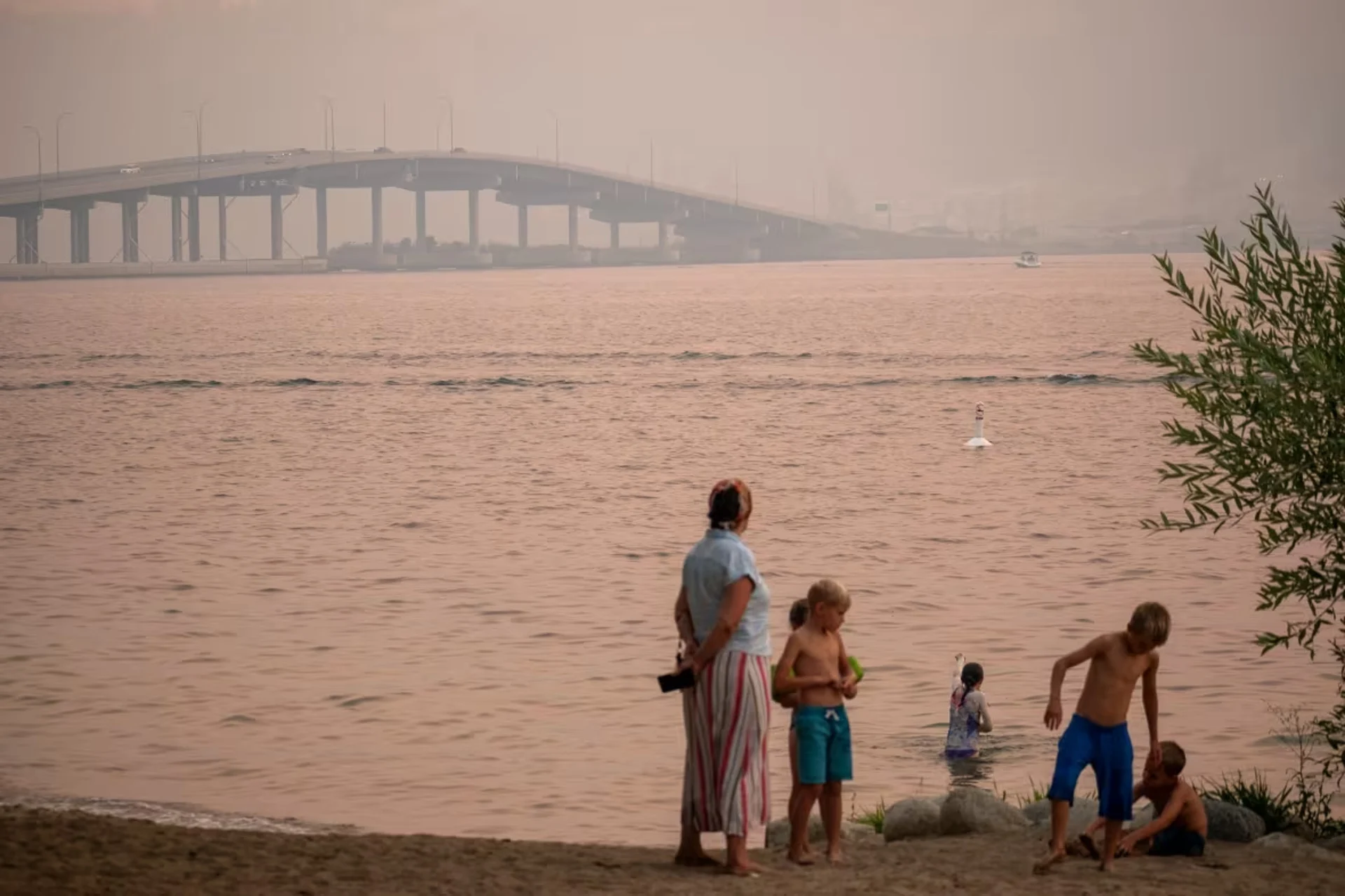
Thousands ordered to evacuate as wildfire threatens Kelowna, West Kelowna
Visit The Weather Network's wildfire hub to keep up with the latest on the unprecedented wildfire season across Canada.
Thousands of people have been forced from their homes in B.C.'s Okanagan, with evacuation orders issued after a wildfire jumped Lake Okanagan, sparking spot wildfires in Kelowna.
Early Friday morning, evacuation orders were issued for residents of the Clifton Road North and McKinley area of Kelowna, which is north of the downtown, due to the McDougall Creek wildfire.
A state of emergency has been declared by the City of Kelowna, which has a population of almost 150,000.

The City of West Kelowna and the Westbank First Nation also declared a local state of emergency Thursday night due to that same wildfire.
More than 2,400 properties are under evacuation orders, with another 4,800 properties under alert. West Kelowna has a population of 36,000.
The Central Okanagan emergency operations website said early Friday that "officials have confirmed some structural loss" in West Kelowna and Regional District of Central Okanagan West areas. A full assessment will be done in the morning, it said.
WATCH: Fire chief warns of 'dramatic' night Thursday as Kelowna fires approach city
RELATED: Essential items for your emergency "grab-and-go" kit
Jason Brolund, chief of the West Kelowna fire department, said the evacuation order area was likely to grow Thursday night.
Earlier that day, Brolund had warned that drought conditions, a dry landscape and high winds meant conditions could worsen at a moment's notice.
"It will take literally nothing to get a fire started," he said.

A look at the radar from Silver Star Mountain Friday morning (The Weather Network)
Evacuees asked to seek shelter with friends, family
Due to the high number of properties under evacuation orders and alerts, residents are being directed to an interactive map to search by address to find out how individual homes and businesses are impacted.
Evacuees are being asked to register online.
For those in Kelowna, a reception centre has been set up at the Salvation Army at 1480 Sutherland Drive.

People in downtown Kelowna watch as the McDougall Creek wildfire burns in West Kelowna, B.C., on Aug. 17, 2023. (Winston Szeto/CBC)
RELATED: Airspace over Kelowna International Airport closed as crews battle wildfires
Evacuees from West Kelowna who live south of Traders Cove can go to the Information Centre at Royal LePage Place at 2760 Cameron Road . For those who live north of Traders Cove, a reception centre for evacuees has been opened at Kal Tire Place at 3445 43rd Ave in Vernon, located around 60 kilometres north of West Kelowna.
A public information line is also available at 250-469-8490 or 1-877-569-8490.
RELATED: 'Crisis situation': N.W.T. declares territorial state of emergency over fires
The regional district is also asking evacuees to reach out to friends and family as hotels, motels and other tourism operators in the area are at capacity.
Everyone covered by an evacuation alert is asked to be prepared to leave at a moment's notice as the province is facing a highly volatile wildfire situation.
WATCH: What to include in your 'grab-and-go' box
Highway 1 closed, more orders issued
DriveBC said Thursday that wildfire activity has closed a stretch of Highway 1 in both directions between Hope and Lytton, the community 260 kilometres northeast of Vancouver that was devastated by fire in 2021.
The closure will remain in place until at least Friday morning.
Highway 97 is closed through Kelowna and West Kelowna for a stretch of more than 60 kilometres between the communities of Coldstream and Peachland because of the wildfires.
The Lytton First Nation issued an evacuation order Thursday afternoon due to the Stein Mountain fire. The order covers the Nkaih Indian Reserve No. 10 and Lytton Indian Reserve 9A.
Other evacuation orders were also issued Thursday evening, including for 40 properties south of Kamloops and for residents of the the Ulkatcho First Nation near Anahim Lake.
A list of all evacuation orders and alerts is posted online by Emergency Info B.C.
A critical 48 hours
At a press conference Thursday morning, provincial officials warned the province is headed into the most critical portion of the wildfire season so far.
Minister of Emergency Management and Climate Readiness Bowinn Ma and Minister of Forests Bruce Ralston were among those who addressed the ongoing wildfire, drought and heat conditions before a cold-weather front was expected to bring strong winds and lightning for virtually the entire province.

"This weather event has the potential to be the most challenging 24 to 48 hours of the summer from a fire perspective," said Cliff Chapman, director of wildfire operations for the BCWS.
"We are expecting significant growth, and we are expecting our resources to be challenged from north to south of the province over the next 48 hours."
As of Thursday afternoon, more than 16,000 square kilometres of land has burned in B.C. — the most recorded land burned in the province's history.
People across B.C. should be prepared to leave their homes
Neal McLoughlin, a BCWS forecaster, warns that people across the province, particularly in the southern and Interior regions, should be prepared to leave their homes.
In a video released by the provincial firefighting agency on Wednesday, McLoughlin says record-high temperatures earlier this week — with some places reaching highs above 40 C — combined with predicted high winds and dry lightning for Thursday through Friday have turned much of the province into a tinderbox, meaning new fires could start and spread very easily.
"You're probably noticing your lawn is starting to show signs of fall. It's turning brown, and you may also be seeing early signs of deciduous trees turning yellow," he said.
"These plants are experiencing extreme drought conditions and are available to burn more than it typically would be this time of year."
Follow evacuation orders: minister
Ma reiterated the importance of residents being prepared with grab-and-go kits so they can leave their homes quickly should an evacuation order come.
"We are urging people to stay calm, to be alert and to be prepared," she said.
"An evacuation order is not the time to wait and see, especially not under the conditions that are being forecasted."

Environment Canada had issued special weather statements covering much of the province's Interior, including the Cariboo, Chilcotin, Okanagan, Thompson-Nicola and Kootenays for a cold front moving into the province, bringing with it an unstable atmosphere and gusty conditions.
Wind gusts of up to 70 km/h, along with dry lightning and continued heat, could contribute to more or worsening wildfires, the agency warned, with drought-stricken trees more likely to burn and blow over.
Under these conditions, a large fire could "quickly change directions," McLoughlin says, "with the flank of the fire quickly becoming the head, and we could have a large fire growing quite quickly across the landscape."
WATCH: Wildfires light up hills around Kelowna, B.C. during intense situation
Other orders, alerts
Meanwhile, the Crater Creek wildfire southwest of Keremeos continues to burn over an area of 100 square kilometres.
It led to the evacuation of more than 100 people in the southern Interior community near the U.S. border. Nineteen properties remain on evacuation order due to the fire, and 189 are on evacuation alert.
Around 1,000 properties in the Kootenays are also on evacuation alert due to several fires burning near the communities of Panorama, Radium Hot Springs and Sparwood.
DON'T MISS: Best practices to keep yourself safe from wildfire smoke
They include the Horsethief Creek wildfire burning about 10 kilometres west of Invermere, a fire of note that is currently almost 40 square kilometres.
The Columbia-Shuswap Regional District has also expanded evacuation alerts due to the Lower East Adams Lake wildfire northeast of Kamloops.
The BCWS says it was close to lifting evacuation orders covering more than 200 properties around Gun Lake, north of Pemberton, where the 26-square-kilometre Downton Lake fire has destroyed three properties, but those plans have been stalled because of the incoming wind and potential lightning.
As of Thursday, 372 active wildfires were burning in B.C., with 14 of those being wildfires of note — meaning they are particularly visible or threatening to properties.
Chapman said there are 3,400 firefighters deployed across the province, with dozens from other jurisdictions such as Mexico and Costa Rica.
B.C. taking patients from N.W.T.
Both Ma and Ralston acknowledged the devastation wildfires are having in the Northwest Territories, with Yellowknife under an evacuation order. They said B.C. was standing with the N.W.T. and would be receiving 55 hospital and care home patients from there.
But officials said because of the convergence of a heat wave, drought and already dry conditions in B.C. combined with a threatening weather event, the province would not be able to send any firefighters to the territory at this time.
"There is a strong likelihood of new fire starts that will grow quickly and unpredictably in the coming days," said Ralston about B.C.
Evacuation centres have been set up throughout the province to assist anyone evacuating from a community under threat from a wildfire.
To find the centre closest to you, visit the EmergencyInfoBC website.
Evacuees are encouraged to register with Emergency Support Services online, whether or not they access services at an evacuation centre.
Thumbnail courtesy of Jaclyn Whittal.
This article was originally written for CBC News.










